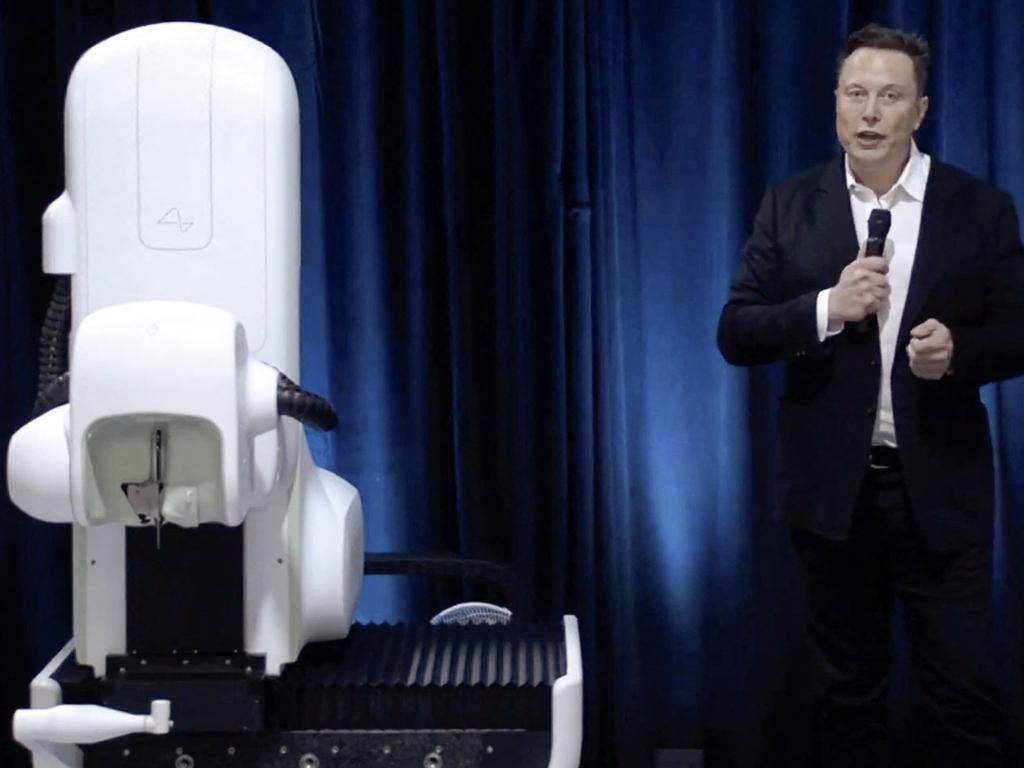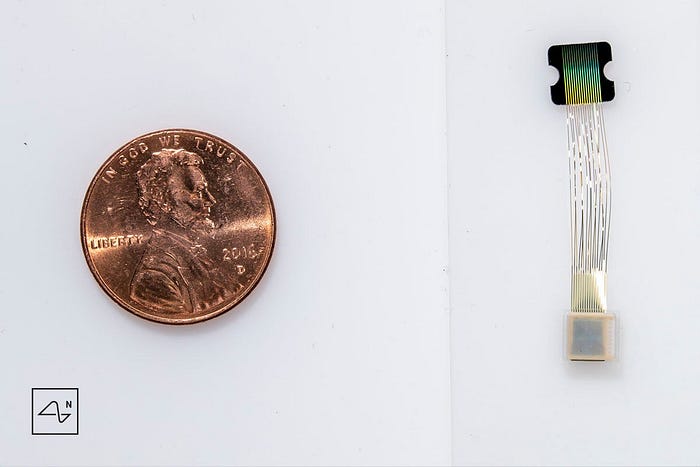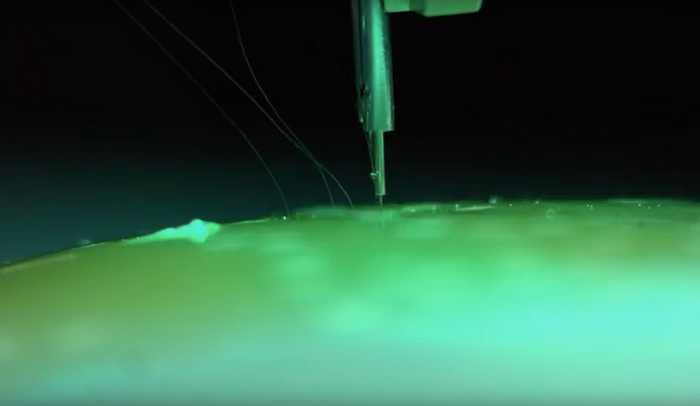Elon Musk’s start-up Neuralink on Thursday said it has approval from US regulators to test its brain implants in people.
Staff writers and AFP
3 min read
May 27, 2023
Elon Musk’s start-up Neuralink on Thursday said it has approval from US regulators to test its brain implants in people.
Neuralink said clearance from the US Food and Drug Administration (FDA) for its first in-human clinical study was “an important first step” for its technology, which is intended to let brains interface directly with computers.
“We are excited to share that we have received the FDA’s approval to launch our first-in-human clinical study,” Neuralink said in a post on Musk-run Twitter.
Recruitment for a clinical trial is not yet open, according to Neuralink. The aim of Neuralink implants is to enable human brains to communicate directly with computers, Mr Musk said during a presentation by the start-up in December.
“We’ve been working hard to be ready for our first human (implant), and obviously we want to be extremely careful and certain that it will work well before putting a device in a human,” he said at the time.
Neuralink prototypes, which are the size of a coin, have been implanted in the skulls of monkeys, demonstrations by the start-up showed.
In February 2022, the company was sideswiped by a legal battle over its alleged mistreatment of test subjects.
The Physicians Committee for Responsible Medicine (PCRM) has come after the company for causing “extreme suffering” for its test subjects. A statement put to the US Department of Agriculture (USDA) claimed monkeys “had their brains mutilated in shoddy experiments and were left to suffer and die”.

At a presentation, Neuralink showed several monkeys “playing” basic video games or moving a cursor on a screen through their Neuralink implant.
The technology has also been tested in pigs.
With the help of a surgical robot, a piece of the skull is replaced with a Neuralink disk, and its wispy wires are strategically inserted into the brain, an early demonstration showed.
The disk registers nerve activity, relaying the information via common Bluetooth wireless signal to a device such as a smartphone, according to Mr Musk.
“It actually fits quite nicely in your skull,” Mr Musk said during a prior presentation.
“It could be under your hair and you wouldn’t know.”
Mr Musk said the company would try to use the implants to restore vision and mobility in humans who had lost such abilities.

“We would initially enable someone who has almost no ability to operate their muscles … and enable them to operate their phone faster than someone who has working hands,” he said.
“As miraculous as it may sound, we are confident that it is possible to restore full body functionality to someone who has a severed spinal cord,” he said.
Beyond the potential to treat neurological diseases, Mr Musk’s ultimate goal is to ensure that humans are not intellectually overwhelmed by artificial intelligence (AI), he said.
Other companies working on similar systems include Synchron, which announced in July that it had implanted the first human brain-machine interface in the United States.

Members of the Neuralink team have shared a “wish list” that ranged from technology returning mobility to the paralysed and sight to the blind, to enabling telepathy and the uploading of memories for later reference — or perhaps to be downloaded into replacement bodies.
Meanwhile, Mr Musk recently established a business devoted to developing sophisticated AI. The boss of Tesla has also predicted that autonomous driving technology at the electric car maker is heading for a breakthrough.
Mr Musk has contended that synching minds with machines is vital if people are going to avoid being so outpaced by AI that, under the best of circumstances, humans would be akin to “house cats.” Experts and academics remain cautious about his vision of symbiotically merging minds with super-powered computing.
Alex PIGMAN (SIC)
Fri, May 26, 2023

Elon Musk standing next to a surgical robot during a Neuralink presentation in 2020
Neuralink, Elon Musk's brain-implant company, has won US approval to test on humans. Here is what to know about the multi-billionaire's dream project to enable the human brain to communicate directly with computers.
- Cyborg future? -
Neuralink is a neurotechnology company co-founded by Musk along with a team of scientists and engineers in 2016 to build direct communication channels between the brain and computers.
The aim is to supercharge human capabilities, treat neurological disorders like ALS or Parkinson's, and ultimately achieve a symbiotic relationship between humans and artificial intelligence.
Neuralink's technology would mainly work through an implant called the "Link" -- a device about the size of five stacked coins that would be placed inside the human brain through invasive surgery.
The hardware would harbor electrodes capable of both recording neural activity and stimulating specific regions of the brain.
Researchers hope the implant's powers will also treat paralysis, spinal cord injuries and brain disorders.
It could also potentially blur the line between human consciousness and computing, an idea that has long excited technologists, while feeding nightmares of a dystopian future taken over by cyborgs.
Last year, 78 percent of US adults surveyed by Pew Research said they probably or definitely would not want a computer chip implanted in their brain to process information faster.
- Many competitors -
According to data company Pitchbook, California-based Neuralink has more than 400 employees and has raised at least $363 million.
Though he wins most of the headlines, Musk is hardly alone in trying to make advances in the field, which is officially known as brain-machine or brain-computer interface research.
Hit with delays, the tycoon had reportedly reached out to join forces with implant developer Synchron about a potential investment. Its implant version does not require cutting into the skull to install it, unlike Neuralink's Link.
The Australia-based Synchron implanted its first device in a US patient in July 2022.
Another implant project, but designed for research purposes, is from company Blackrock Neurotech and has also received FDA approval for human testing.
A Neuralink co-founder has also split from Musk and raised venture capital for his own project at a startup called Science.
Other companies seeking to make a play in the sector include BrainCo, Kernel and CTRL-Labs, now a part of Meta's virtual reality division.
- Animal testing -
The FDA approval for human testing comes at a great relief for Neuralink which until now had been testing its implants in monkeys and other animals.
Reuters reported in December that the United States Department of Agriculture (USDA) had opened an investigation into potential violations of the Animal Welfare Act at Neuralink.
The report estimated that Neuralink killed about 1,500 animals, including more than 280 sheep, pigs and monkeys for research since 2018.
The USDA refused to confirm or deny the report to AFP at the time.
Arch rival Synchron reportedly killed only about 80 sheep as part of its research, according to documents seen by Reuters.
arp/bgs
Neuralink: Making Mind Control Possible
2020

Artificial intelligence continues to advance our society, but many of us fear the idea of A.I. taking over humanity. This is the reason why many individuals have disapproved of Elon Musk’s newest innovation Neuralink; a brain-computer interface, that is implementable in the human brain.
The thought of computers in our brain may seem alarming at first, due to the fact that we think of the worst possible outcomes. In reality, a device like Neuralink could change the lives of many individuals who have to deal with terrible illnesses that cause pain to their lives daily.
Currently, humans have five senses, although the implementation of the Link could give us a sixth; which would be a mind control sense and would improve the quality of life for everyone, by allowing us to interact with computers.

“It’s kind of like Fitbit in your skull with tiny wires.”
-Elon musk
Understanding How The Brain Communicates
In order to understand how the Link works, you must understand that your brain sends information to different parts of your body using neurons. Within your brain, these neurons will connect together using a neural network and communicate using chemical signals called neurotransmitters. The reaction between different neurons will create an electric field, and these reactions can be recorded by placing neurotransmitters nearby. The electrodes will then translate these signals into an algorithm, a computer can interpret. Once the Link is installed into someone’s brain, the device will be able to send and receive neurons in your brain.

Getting The Link Inside Our Head
Drilling a hole into your skull and carefully inserting wires into your brain, is a little beyond human capabilities, and due to the complexities of this procedure, Elon Musk plans to have the Link inserted by a robot.
The robot that will carry out the procedure, will insert the Link into your brain using a microscope and needles that are so small you cannot easily spot them with the human eye (24 microns to be exact).
Additionally, the robot would insert around 10,000 electrodes, without touching any veins or arteries, bypassing any kind of blood vessel, making the procedure very safe. Fortunately, the operation only requires a 2mm incision, that would be dilated to 8mm and afterwards, the exposed part of the brain would be covered by the chipset module.
In the early stages of this procedure, Elon Musk estimates that the implementation could take up to one hour without general anesthesia, and eventually cost the same price of a LASEK eye surgery.

“You can go to hospital in the morning and leave by afternoon. And it can be done without general anesthesia.” -Elon Musk
So what will The Link do?
Although this device is in the early stages of testing, the first stages of the Link aim to target neural deficiencies including paralysis, mental illness, epilepsy, memory loss and hearing. In the future, Elon Musk plans to extend the device’s capabilities to download skills into your brain (for example, a new language), stream music in your head, communicate with external computers and even make telepathy less farfetched.

The Link has only received the FDA breakthrough device designation and still faces certain restrictions. Nevertheless, I can see many applications of this device changing many individuals' lives.
When my grandfather was alive, as he grew older his hearing gradually deteriorated. Unfortunately, when he needed his hearing the most, he could not hear anyone, which made his life quite difficult. Due to the pain in his hands and arms, his deafness, and the language barrier, it was impossible for him to learn sign language. When my grandfather became really sick, my mother and grandmother were the only individuals who could successfully communicate with him, and this made his last stages of life painful and heartbreaking.
With a device like the Link, people who are deaf can have a chance of hearing, improving the overall quality of their life, and preventing any feelings of isolation.
But pigs are first!
Remarkably enough, the early stages of the Link work in pigs. The video above shows Neuralink’s pig, Gertrude eating off a stool and sniffing straw. Every time she carries out an action, the Link tracks the electrical signals firing in her brain.
The Link Giving Us Endless Possibilities
Neuralink is an ambitious project but is one that could improve the lives of all individuals.
Despite the amazing technological advances made over the past few years, healthcare remains to be an important issue and still has a long way to go. With the drastic improvements that Neuralink plans to implement within their devices, the quality of life will improve for humanity, and we will be able to experience things that could not be done without A.I., giving humans more power.
We should not fear technology, since technology is our future. Instead, we should use technology as an advantage, and a company like Neuralink is developing products that will do this and ultimately reshape the human race.
Key Takeaways 🔑
- The Link is an invasive brain-computer interface that is being developed by Neuralink
- Electrodes can measure brain activity, and will then translate these signals into an algorithm, a computer can interpret. Once the Link is installed into someone’s brain, the device will be able to send and receive neurons in your brain
- A super-precise robot would insert the 10,000 Neuralink electrodes into your skull by making a 2mm incision in your head
- The link will have many possible capabilities including treating neural deficiencies, streaming music in your head, communicating with external computers and even telepathy
- Currently, the link works in pigs
Contact me for any inquiries 🚀
Hi, I’m Ashley, a 19-year-old coding nerd and A.I. enthusiast!
I hope you enjoyed reading my article, and if you did, feel free to check out some of my other pieces on Medium :)
Articles you will like if you read this one:
💫 A Crash Course On Brain-Computer Interfaces
💫Neuralink: Making Mind Control Possible
💫NeuroPace- The Device That Stops Seizures Before They Happen
💫 Detecting Pneumonia Using CNNs In TensorFlow
If you have any questions, would like to learn more about me, or want resources for anything A.I. or programming related, you can contact me by:
💫Email: ashleycinquires@gmail.com

No comments:
Post a Comment